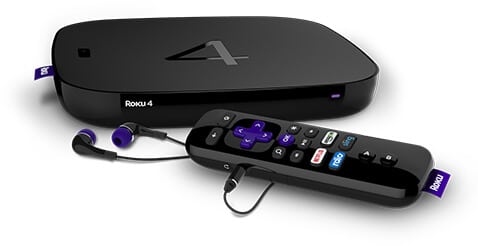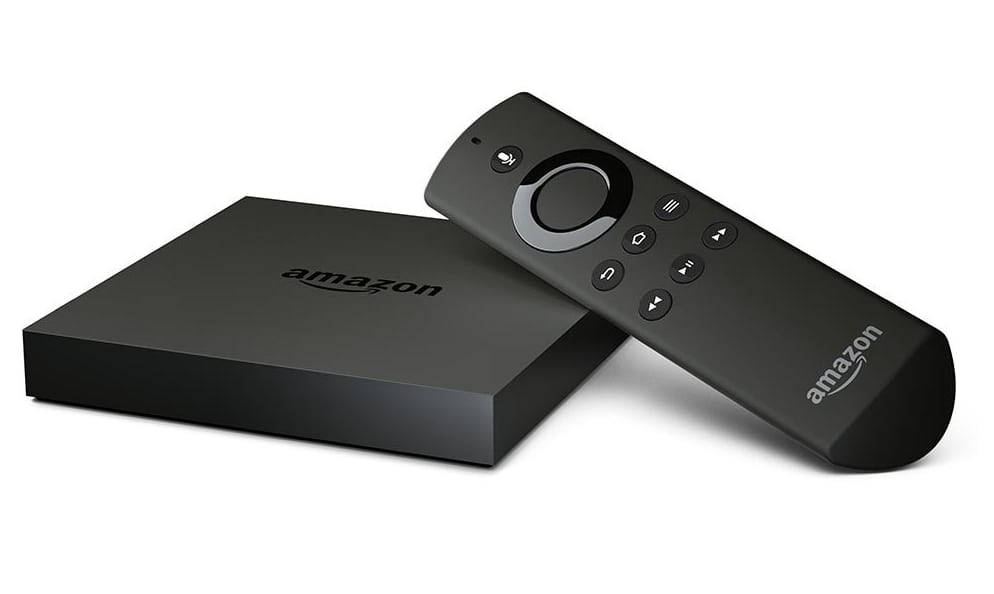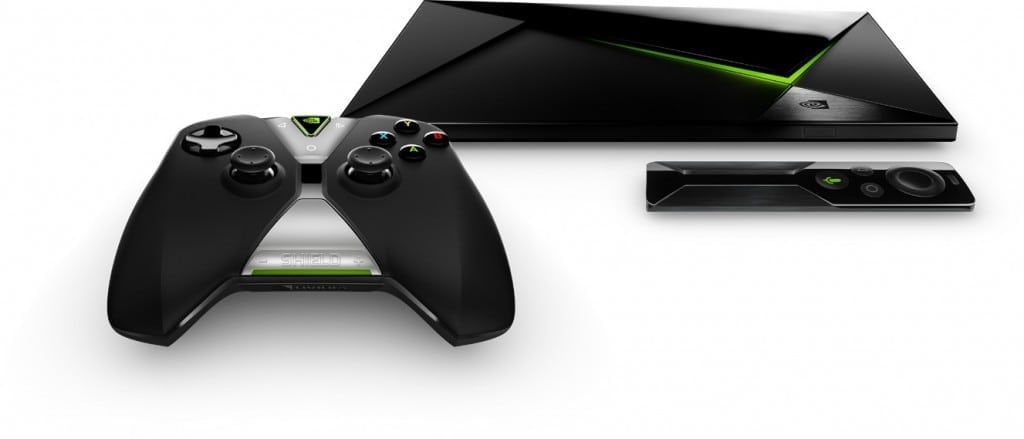This blog discusses three UHD/4K streaming players that are now available to consumers and also provides an update on Ultra HD Blu-ray.
Ultra HD Blu-ray Update
It now looks like the 2016 Consumer Electronics Show (6-9 January 2016 in Las Vegas) will be the venue for the big roll-out of the first generation Ultra HD Blu-ray players and also the initial batch of movie releases. Preparing for this roll-out, the Blu-ray Disc Association (BDA) as created a web site to promote Ultra HD-Blu-rays (HERE). While it appears most of the world will have to wait until the Feb./March 2016 for the first consumer Ultra HD Blu-ray products to arrive, Panasonic has rolled out Ultra HD Blu-ray recorder that works with certain Japanese satellite delivered services and includes a 3TB HDD for DVR functions. It's rather expensive at 400,000 yen (about $3300 US) and is a limited production item that is only available in Japan. The Panasonic Japan web page for this product (in Japanese) is HERE. While this Panasonic Ultra HD Blu-ray recorder may be expensive, the first consumer Ultra HD Blu-ray Players are expected to carry retail prices starting at around $500 when they become available to consumers in the USA in the next few months (perhaps as early as Feb. 2016).
UHD/4K Streaming Players
During the past few months several companies have introduced a new generation of streaming video players that are capable of outputting UHD/4K video. Perhaps the new Apple TV received the most press coverage of the latest generation of streaming video players, it doesn't support UHD/4K, so it doesn't enter into this discussion. Most of the current UHD TVs are now smart TVs that have built-in apps for the most popular streaming video services, including support for streaming 4K/UHD video from the likes of Netflix, Amazon and Vudu. However, there are no smart UHD/4K projectors, but now we have available 3 new streaming video players that deserve your consideration if you are looking to add smart TV functions to your UHD/4K capable projector.
All 3 of these UHD/4K streaming players do some things well but each has its own set of limitations or issues.
Roku 4

Roku has been a leading manufacturer of add-on streaming players for several years and now offers a variety of models, including a Roku Streaming Stick as well as a new UHD/4K capable player. At $129 (MSRP) the new Roku 4 (pictured above) is the most expensive streaming player from Roku. It is physically larger than the previous Roku players, while the remote control is essentially the same as used with certain lesser models. The Roku 4 accepts a basic set of voice input commands and earphones can be plugged into the remote control for listing to the audio. Roku says the Roku 4 offers access to 2500+ channels of on-demand services (audio and video) and certainly the most popular video streaming services are included.
The Roku 4 has the least internal storage (i.e., only 256 MB) of the 3 UHD/4K players discussed in this blog, but like the others it has a microSD card slot for adding more storage capacity.
The Roku 4 features an full bandwidth HDMI 2.0 output using HDCP 2.2 copy protection, the same as will the upcoming Ultra HD Blu-ray players. At this point, this is one of the very few video sources available to consumers that actually support these standards, but there are certainly a lot more coming over the next year. The Roku 4 is the only one of the 3 UHD/4K players discussed in this blog that I actually purchased for my own use and I currently have it connected to UHD TV for testing, but I will be moving it over to use with a new JVC DLA-RS600 projector when it arrives.
The Roku 4 has a well designed graphical user interface and has adequate processing power to provide responsive menu navigation. I would say that overall for viewing UHD/4K streaming video it does a good job, but there are a few limitations. For example, while it does support UHD streaming services, it does not support High Dynamic Range (HDR) video. It appears Roku may be able to add HDR support at a later date via a firmware update, but it's not clear when, or if, this upgrade will actually be released.
One annoyance I found with the Roku 4 is there is no power switch. While Roku says their players in general don't need a power switch (either on the unit or on the remote) because they consume no more power than a night light, this is not the case for the Roku 4. Even when sitting idle for a long time the player's case stays quite warm. When connected to my UHD TV using an input that supports HDMI 2.0 and HDCP 2.2, I found that in order for the Roku to successfully connect to the TV, the TV had to be turned on first, the TV set to the correct HDMI input, and then the Roku 4 needed to be turned on. But lacking a power switch on the Roku that ment either briefly unplugging the power cable or the HDMI cable from the Roku 4 was required to get a successful HDMI/HDCP connection. This may or may not be an issue when using the Roku 4 with other UHD TVs or a UHD/4K projector.
Another limitation of the Roku 4, that Roku seems to consider a feature, is UHD video is output at 2160p/60 Hz. format, even when the source material (i.e., a movie) is in 2160p/24 native format. If your UHD TV or projector has a full bandwidth (i.e., 18 Gbps) HDMI 2.0 (or 2.0a) input then this may not be an issue. However, many UHD TVs, as well the currently available native UHD/4K projectors from Sony and the pseudo 4K projector for Epson, have the limited bandwidth version of HDMI 2.0 which limits the bit depth to 8-bit and the chroma to 4:2:0 for 2160p/60 inputs. Thus, for streaming services offering 10-bit depth 2160p video, it will have to downgraded to 8-bit depth when connected to such UHD display devices. However, if Roku would have allowed native source material produced at 24 frames per second (vitually all theatrical movies) to be output in 2160p/24 format these same UHD TVs and projectors would not have the 8-bit limitation due to their use of the lower bandwidth HDMI 2.0 inputs.
1/15/2015 Update: After connecting the Roku 4 to a new JVC DLA-RS600 projector I found the Roku 4 allows the 4K/UHD output to be set to 2160p with 10-bit (per color) depth (my older UHD TV would only allows for 8-bit with the Roku 4's 4K 60Hz output). When connected to the JVC projector (which can display up to 12-bit depth with 4K sources) and with the 10-bit setting ,the Roku 4 still displays the on-screen menus at 60Hz using 8-bit depth then when streaming 4K video it switches to 10-bit depth, but drops the refresh rate down to 30Hz (max.). This indicates to me that the Roku 4's HDMI 2.0 chip is the older version that is limited to 10.2 Gbps max. data rate rather the newer full capacity 18 Gbps HDMI 2.0 chip.
The bottom line is at least some of the limitations (e.g., HDR support, 2160p/24 support) of the current Roku 4 may be overcome via future firmware updates if Roku elects to do so. However, there does appear to be a HDMI 2.0 hardware limitation, as noted in the update above.
Fire TV

The recently released 2nd generation model of Amazon's Fire TV now offers support for UHD/4K video streaming. It is a compact unit, as shown the photo above. Of course it supports Amazon's own streaming services but also most of the other popular streaming services as well. The Fire TV carries a MSRP of $99 and supports not only streaming video and audio services. but gaming services as well (with the Gaming Edition of the Fire TV - $139). The Fire TV also offers user voice input using Amazon's Alexa cloud based voice service (as used in Amazon's "Echo" device). The Fire TV comes with 8 GB of internal storage and has a microSD card slot that can be used to increase storage capacity.
Sounds like the perfect UHD/4K streaming player, well not quite. For starters its output is not HDMI 2.0. Rather it is HDMI 1.4 (or perhaps 1.4 with some enhancements) but it does support HDCP 2.2. This hardware limitation can be expected to prevent the Fire TV from being able to support some of the more advanced features being offered with UHD/4K video. For example, Amazon's own streaming video service now includes a few UHD titles with High Dynamic Range (HDR), but only the non-HDR version of these videos can be supported by the Fire TV (or the Roku 4 for that matter, but with the Roku 4 it appears to be a software/firmware limitation that could potentially be the addressed in the future). This same HDMI limitation also means there is no hardware support for UHD video at 60 Hz, as the HDMI hardware being used in the Fire TV is limited to 30 Hz maximum at 2160p resolution.
Nvidia Shield Android TV

The Nvidia Shield Android TV is a UHD/4K streaming player that was introduced a few months before the latest Roku and Amazon offerings discussed above. The Shield TV player if housed in a small and very thin case, as seen in the photo above, and offers the most powerful processing of the 3 streaming video players discussed in this blog. It supports a fairly wide range of audio and video streaming services and also gaming. At a MSRP of $199 (including the game controller) it is the most expansive the three UHD/4K streaming players discussed in this blog. The Shield TV comes with the game controller, but it you want a controller more oriented to just navigating the menus and playing streaming video then the optional Shield Remote will cost you another $49 (MSRP). The Shield has a micro SD card slot that can be used to increase storage capacity beyond the internal 16 GB of storage.
This is an Android based TV streaming player and connects to Google Play for a wide selection videos and apps. Thus, you can use your TV for displaying and using Android apps.
As for the UHD/4K video services, while many video streaming services are supported by the Shield, others including Amazon Video, are currently missing. Apps for additional services could be added in the future, but as it now stands the Roku 4 and Fire TV appear to support a greater number of the popular streaming video services that are offering UHD/4K video. The Shield offers a good graphical user interface and is very responsive to user inputs.
The Shield TV's output is HDMI 2.0 with HDCP 2.2 copy protection, but while Nvidia says it supports 2160p/60 it does not specify what bit depth or chroma formats are supported at 60 Hz. Thus, it's not clear if it is a lower bandwidth (i.e., 10.2 Gbps) or the full bandwidth (i.e., 18 Gbps) version of HDMI 2.0. It appears most likely to be the less capable version of HDMI 2.0. We do know that as it now stands there is no support is offered for HDR video and this may be limited by the HDMI hardware being used, at least for UHD video at 60 Hz.
Thus, it possible that Nvidia will add support for addition UHD/4K services in the future, there may be hardware limitations that may prevent support for some of the more advanced features including HDR and increased bit depths.
Conclusions
Roku, Amazon and Nvidia have all produced a new generation of video players that can stream UHD/4K video. However, these are all first generation players, as far as supporting UHD/4K video, and each model has its own set of limitations. Some of the limitations, such as the Amazon Fire TV's use of a HDMI 1.4 interface, are hardware based and as a result certain of the advanced features being offered by some of the steaming video services cannot now, or in the future, be supported on the existing hardware platform. Other limitations, such as the Nvidia Shield TV's lack of support for Amazon UHD/4K video streaming services, may only require the player manufacturer and the streaming service provider to agree to add the service then make the firmware/app available to the owners of the players.
Also all 3 of these players have had some bugs/issues where the player manufacturer has responded with a firmware update and there are remaining issues that will likely still need to be addressed with future firmware updates. That's the nature of cutting edge technology.




